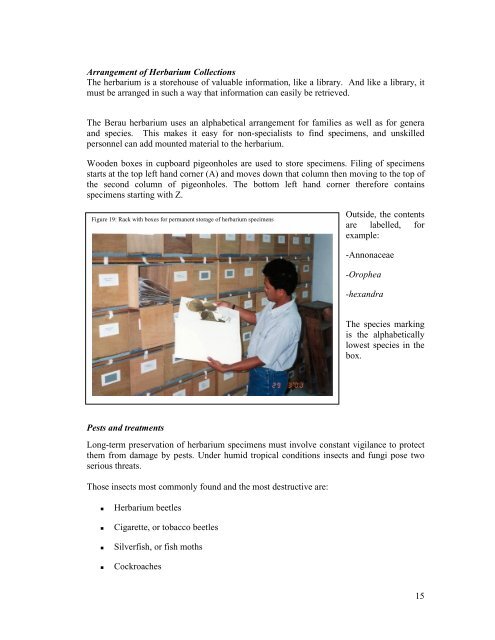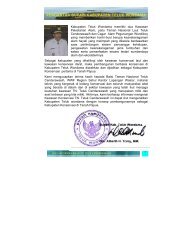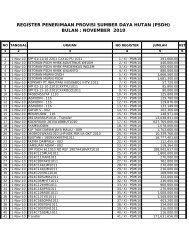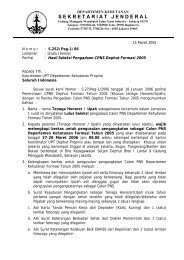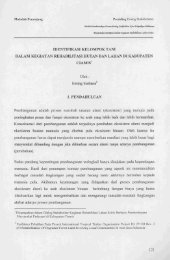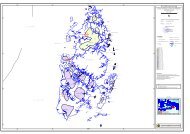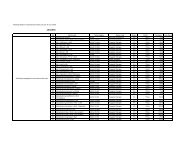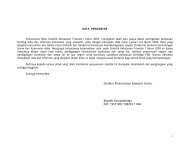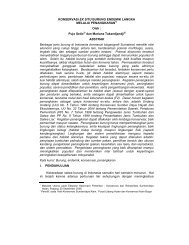BERAU HERBARIUM
BERAU HERBARIUM
BERAU HERBARIUM
You also want an ePaper? Increase the reach of your titles
YUMPU automatically turns print PDFs into web optimized ePapers that Google loves.
Arrangement of Herbarium Collections<br />
The herbarium is a storehouse of valuable information, like a library. And like a library, it<br />
must be arranged in such a way that information can easily be retrieved.<br />
The Berau herbarium uses an alphabetical arrangement for families as well as for genera<br />
and species. This makes it easy for non-specialists to find specimens, and unskilled<br />
personnel can add mounted material to the herbarium.<br />
Wooden boxes in cupboard pigeonholes are used to store specimens. Filing of specimens<br />
starts at the top left hand corner (A) and moves down that column then moving to the top of<br />
the second column of pigeonholes. The bottom left hand corner therefore contains<br />
specimens starting with Z.<br />
Figure 19: Rack with boxes for permanent storage of herbarium specimens<br />
Outside, the contents<br />
are labelled, for<br />
example:<br />
-Annonaceae<br />
-Orophea<br />
-hexandra<br />
The species marking<br />
is the alphabetically<br />
lowest species in the<br />
box.<br />
Pests and treatments<br />
Long-term preservation of herbarium specimens must involve constant vigilance to protect<br />
them from damage by pests. Under humid tropical conditions insects and fungi pose two<br />
serious threats.<br />
Those insects most commonly found and the most destructive are:<br />
<br />
<br />
<br />
<br />
Herbarium beetles<br />
Cigarette, or tobacco beetles<br />
Silverfish, or fish moths<br />
Cockroaches<br />
15


